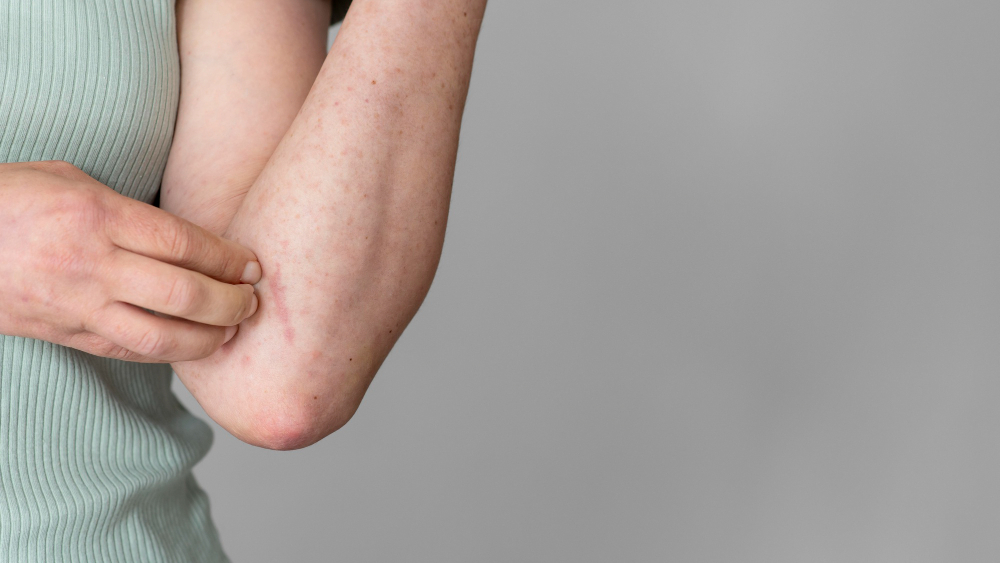Lupus is a chronic autoimmune disease that can significantly impact various body systems, including the skin, joints, and organs. Early detection and awareness of its symptoms are crucial for effective management and improved quality of life. In this blog, we will explore the warning signs of lupus, with a particular focus on the skin rashes that are often among the first indicators of the condition.
WHAT IS LUPUS?
Lupus is an autoimmune disease where the immune system mistakenly attacks healthy tissues. It can manifest in several forms, with systemic lupus erythematosus (SLE) being the most common type. SLE can affect multiple organs and is often characterized by a wide range of symptoms, making it challenging to diagnose. Women, especially those of childbearing age, are more likely to develop lupus, although it can affect anyone, regardless of age or gender.
COMMON SYMPTOMS OF LUPUS
Lupus presents a variety of symptoms, which can vary widely among individuals. Common symptoms include:
- Fatigue: Chronic tiredness that interferes with daily activities.
- Joint Pain and Swelling: Often migratory and may be accompanied by stiffness.
- Fever: Unexplained fevers can indicate inflammation or disease activity.
- Photosensitivity: Increased sensitivity to sunlight, which can trigger rashes or flares.
Recognizing these symptoms is essential for identifying potential lupus cases early.

TYPES OF SKIN RASHES ASSOCIATED WITH LUPUS
1. BUTTERFLY RASH
- Description: The butterfly rash, or malar rash, appears across the cheeks and bridge of the nose, resembling a butterfly’s wings. It is often red or purplish, flat or slightly raised, and may feel warm to the touch.
- Significance: This rash is a hallmark sign of systemic lupus erythematosus (SLE) and is particularly significant because it is frequently triggered by sun exposure. Its presence can indicate active disease and serve as a critical diagnostic clue for healthcare providers.
2. DISCOID RASH
- Appearance: Discoid rashes manifest as circular, raised patches that vary in color from red to brown and often have a scaly or crusty appearance.
- Common Locations: These rashes are typically found on the face, scalp, ears, and arms but can appear anywhere on the body. Discoid rashes can be itchy or painful and may lead to scarring over time.
3. OTHER RASHES
- Urticarial Rashes: Known as hives, these raised, itchy welts can vary in size and may occur anywhere on the body. While not specific to lupus, they can indicate disease activity.
- Psoriasis-like Lesions: Some individuals with lupus may develop red, scaly patches resembling psoriasis. These lesions can appear anywhere and indicate overlapping autoimmune conditions.
- Side Effects of Vitamin D Shots and Their Hidden Link With Blocked Arteries

- What is Share Market? Complete Guide with History, Working & Benefits

- A Visual Journey Through Studio Ghibli’s Magical World

- Angkor Wat – The Largest Hindu-Buddhist Temple in the World

- Border-Gavaskar Trophy

- UNESCO World Heritage Sites

IMPORTANCE OF EARLY DETECTION
Recognizing skin rashes and other symptoms associated with lupus is crucial for early diagnosis and effective management. Early detection can lead to better treatment options and improved quality of life. Delayed diagnosis can result in severe complications affecting the kidneys, heart, and other vital organs.
WHEN TO SEEK MEDICAL ATTENTION
It’s essential to consult a healthcare professional if you notice any persistent or worsening rashes, unexplained joint pain, fatigue, or fever. Keeping a symptom diary can provide valuable information for your healthcare provider and help in diagnosing lupus.
DIAGNOSTIC PROCESS
Diagnosing lupus involves a thorough evaluation, including:
- Medical History and Physical Examination: A comprehensive assessment of symptoms and physical signs.
- Laboratory Tests: Blood tests, such as the antinuclear antibody (ANA) test and lupus panel, are conducted to check for specific antibodies associated with lupus.
- Skin Biopsy: In some cases, a biopsy may be performed to confirm the diagnosis of discoid lupus.
LIVING WITH LUPUS
Managing lupus typically involves medications to control symptoms and lifestyle changes, such as a healthy diet, regular exercise, and stress management. Joining support groups can provide emotional and practical help, allowing individuals to connect with others facing similar challenges.
CONCLUSION
Recognizing the warning signs of lupus, especially skin rashes, is vital for early diagnosis and effective management. If you or someone you know is experiencing these symptoms, don’t hesitate to seek medical advice. Staying informed and proactive about your health can lead to better outcomes and a more fulfilling life.
ADDITIONAL RESOURCES
- Lupus Foundation of America: [Website link]
- National Resource Center on Lupus: [Website link]
- Books and Articles on Lupus Management: [Website link]
By understanding the signs of lupus and seeking timely medical attention, you can help ensure a better quality of life while managing this complex condition.






